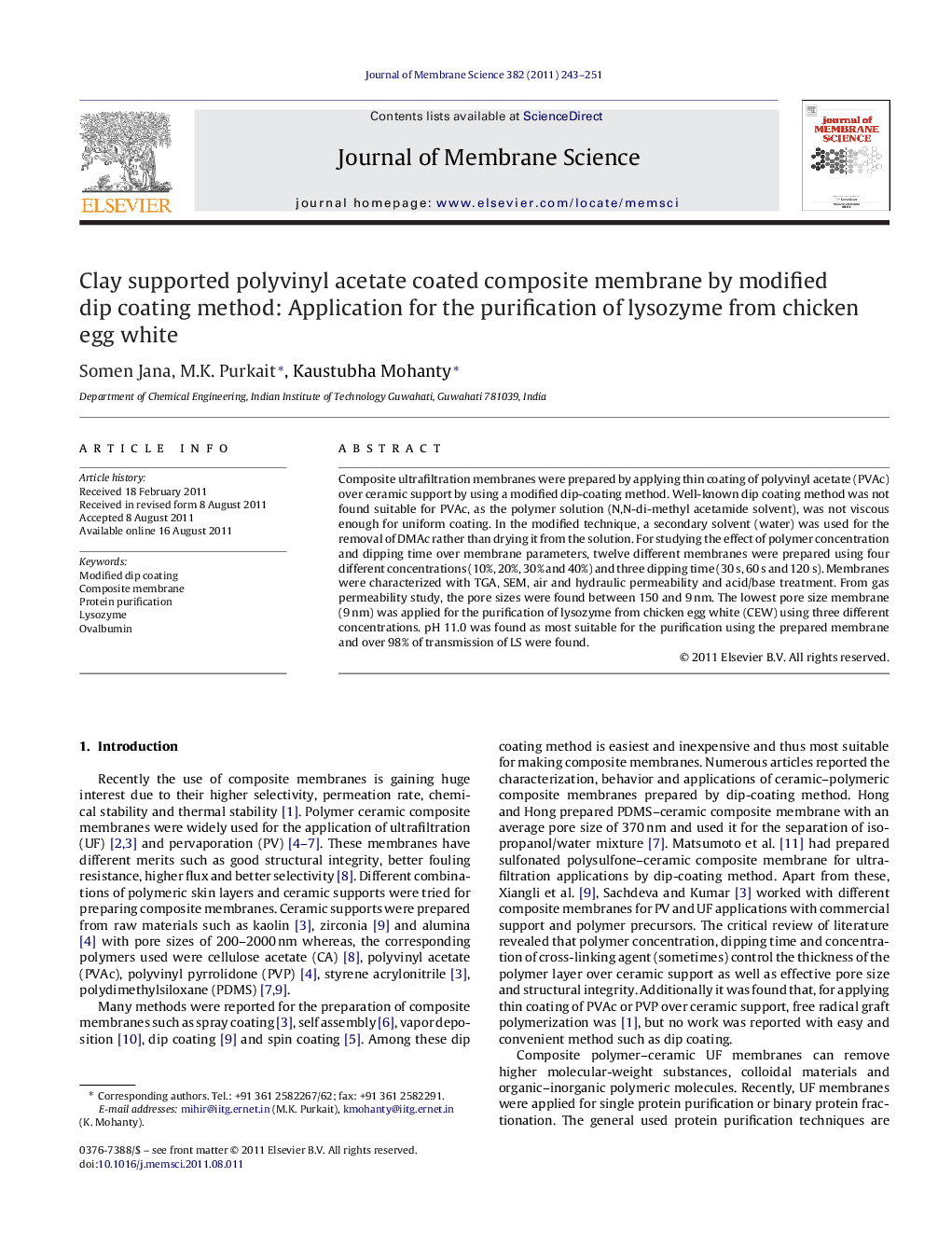| Article ID | Journal | Published Year | Pages | File Type |
|---|---|---|---|---|
| 635663 | Journal of Membrane Science | 2011 | 9 Pages |
Composite ultrafiltration membranes were prepared by applying thin coating of polyvinyl acetate (PVAc) over ceramic support by using a modified dip-coating method. Well-known dip coating method was not found suitable for PVAc, as the polymer solution (N,N-di-methyl acetamide solvent), was not viscous enough for uniform coating. In the modified technique, a secondary solvent (water) was used for the removal of DMAc rather than drying it from the solution. For studying the effect of polymer concentration and dipping time over membrane parameters, twelve different membranes were prepared using four different concentrations (10%, 20%, 30% and 40%) and three dipping time (30 s, 60 s and 120 s). Membranes were characterized with TGA, SEM, air and hydraulic permeability and acid/base treatment. From gas permeability study, the pore sizes were found between 150 and 9 nm. The lowest pore size membrane (9 nm) was applied for the purification of lysozyme from chicken egg white (CEW) using three different concentrations. pH 11.0 was found as most suitable for the purification using the prepared membrane and over 98% of transmission of LS were found.
► Composite UF membrane prepared by coating of polyvinyl acetate over clay support. ► A new modified dip coating method was adopted for coating of polyvinyl acetate. ► Lowest pore size of 9 nm was found. ► Prepared membranes were used for the purification of lysozyme. ► 98% transmission of lysozyme was obtained at pH = 11.0.
